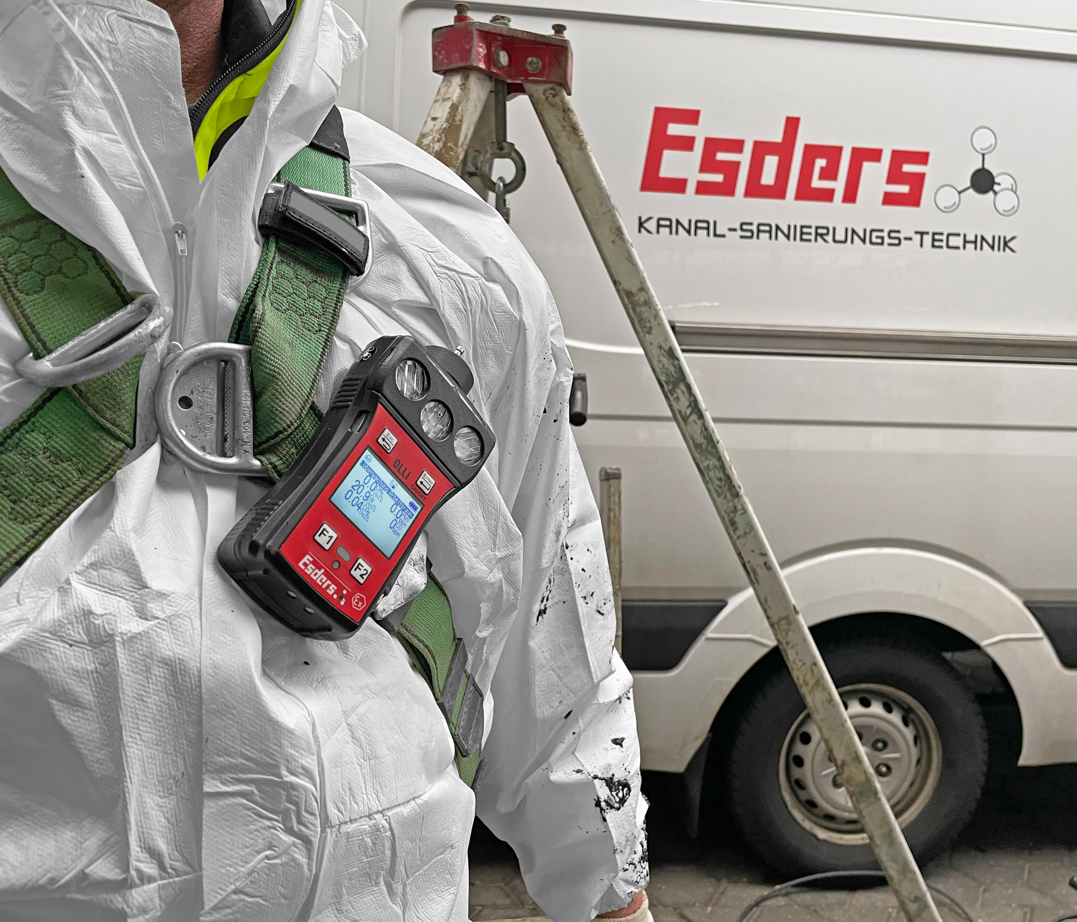Table of Contents
The protection of people from possible work-related health hazards is a complex issue in the workplace context. The wearing of personal protective equipment (PPE) is often recommended or even mandatory for certain activities. In addition, protective equipment is used to prevent falls, e.g. when working in manholes.
Occupational health and safety standards
In Germany, there are a number of DIN standards, DGUV rules, leaflets, information and other technical regulations on occupational safety and the protection of people at work. These are often application-specific and refer to a wide variety of situations and hazards, e.g. from electric shock, fire, explosion, falls or falling objects or from hazardous substances and gases. The regulations usually also specify suitable measures to protect affected persons from the corresponding hazards. According to DGUV Rule 113-004, these include, for example:
- Protective measures against hazardous substances and dangerous environments
- Protective measures against hazards due to oxygen deficiency and excess
- Explosion protection measures
- Protective measures against hazards caused by biological substances (e.g. risk of infection)
- Protective measures against radiation
- Protective measures against heat and cold
- Protective measures against mechanical hazards
- Protective measures against electrical hazards
- Measures to protect against falling
- Protective measures against sinking or spillage
- Protective measures against health hazards due to increased physical strain
Types of gases for which we offer personal protective devices
For us as a manufacturer of gas measurement technology and for our customers, the hazards from explosions, foreign gases and oxygen deficiency are the most relevant. The corresponding gases can consequently be divided into combustible or explosive gases (Ex), toxic gases (Tox) and oxygen (Ox). Each category presents specific risks that must be taken into account and to which attention should be paid in the context of personal protection.

Flammable and explosive gases (Ex)
Flammable gases are those that can form an explosive atmosphere with air in certain concentrations. Examples of flammable gases are methane, propane and butane. Handling these gases requires special precautions to minimise the risk of fire and explosion.
Toxic gases (Tox)
Toxic gases can affect people’s health and even be life-threatening. Some toxic gases are carcinogenic, while others can affect the central nervous system or impair breathing. Examples of toxic gases are carbon monoxide, carbon dioxide and hydrogen sulphide. Protection from these gases requires compliance with occupational exposure limits and the use of appropriate protective equipment.
Oxygen (Ox)
The oxygen content in the air is also an important aspect of personal protection. In certain situations, the oxygen content can be displaced by other gases, which can lead to respiratory distress. Particular care must be taken in confined spaces or containers where a lack of oxygen may occur.
Protective measures: gas warning devices
To effectively protect people from hazardous gases, gas detectors, such as our OLLI with certified measuring function, are used. These devices can measure the content of hazardous gases in the ambient air and give warnings when certain concentrations are exceeded. Gas detectors are an essential tool for personal protection and can help to indicate potential hazards in time.
It is important that employees, especially those working in environments where hazardous gases may be present, have proper training and knowledge. Understanding the basics of personal protection and the proper use of protective equipment, such as gas detectors, is critical to minimising the risk of accidents or harm to health from hazardous gases.
Since most gases (Ex, Ox and Tox) are colourless, odourless and tasteless, they cannot be detected without additional equipment.
For this reason, stationary or mobile / portable gas detectors are used for personal protection. Particularly in the case of portable gas detectors, a distinction is made between single and multiple gas detectors. The latter measure up to seven gases simultaneously, depending on the device. Single gas detectors are calibrated for a specific gas and only warn of increased concentrations of this one gas, e.g. so-called CO alarms, or oxygen deficiency.
There are corresponding certifications for the measuring function of the devices, which are based on national and international standards. In colloquial terms, this is also referred to as “technical measurement reports”, “functional testing” or “active explosion protection”. Behind this is compliance with the requirements of the following German standards:
- DIN EN 60079-29-1 for combustible gases
- DIN EN 45544 for toxic gases (to be replaced in future by DIN EN IEC 62990-1)
- DIN EN 50104 for oxygen
The Employer’s Liability Insurance Association for Raw Materials and the Chemical Industry (in Germany: BG RCI) maintains a list of suitable gas warning devices that meet the requirements of the above-mentioned standards and thus correspond to the state of the art.

Technical knowledge for confined space entry
In the context of personal protection from hazardous gases, continuous monitoring, regular maintenance of equipment and compliance with applicable standards and regulations is essential. Only a comprehensive understanding of the hazards and appropriate precautions can ensure the protection of people.
This blog post is the first in our series on personal protection. In the next two you will find more detailed information on the topic of flammable gases and toxic gases.

